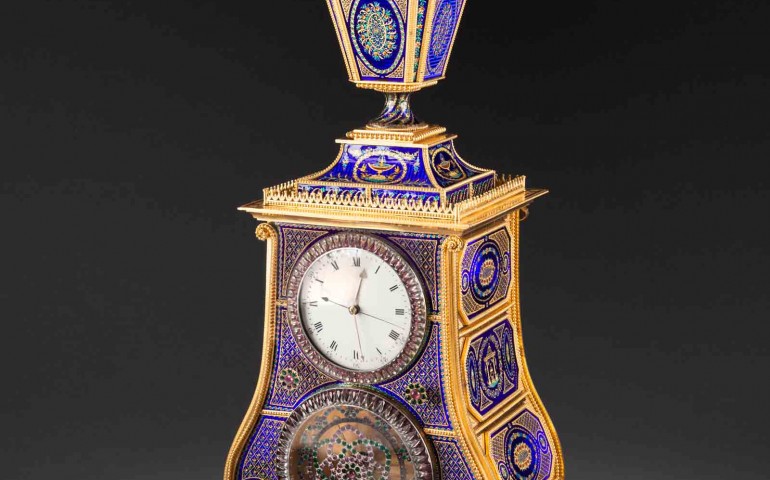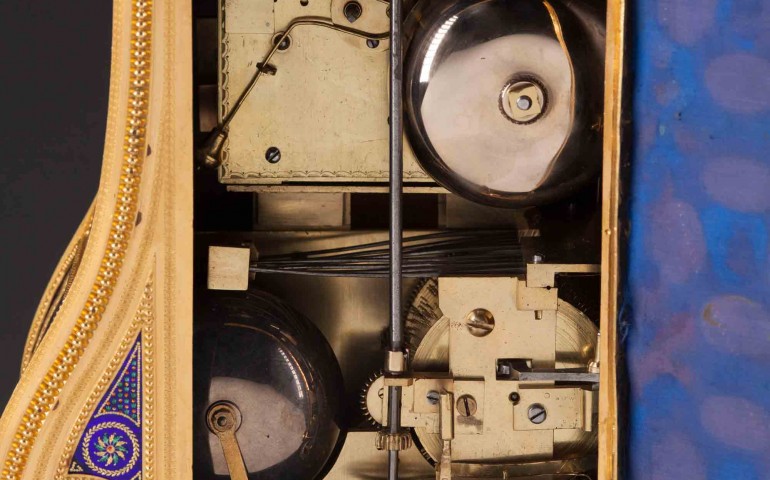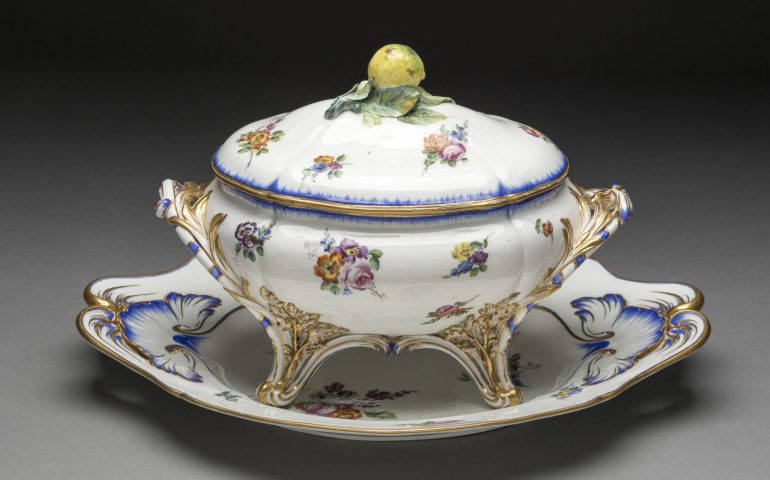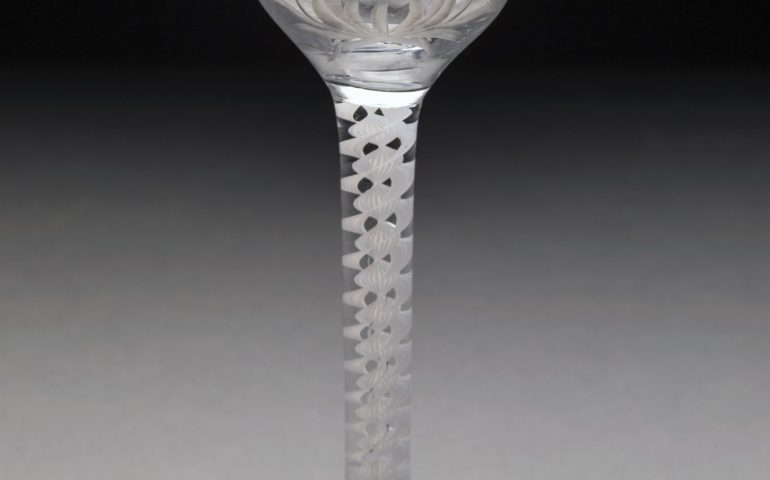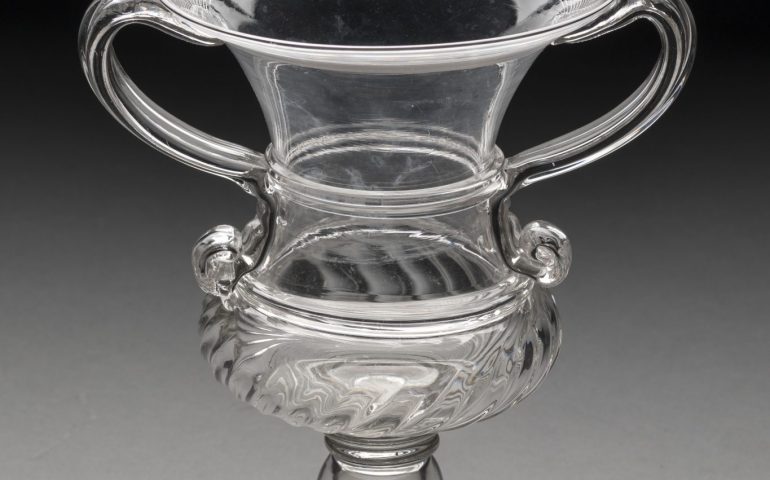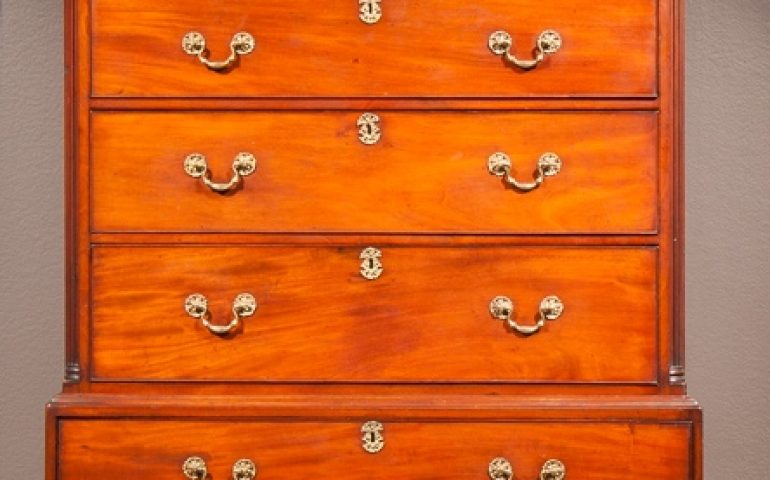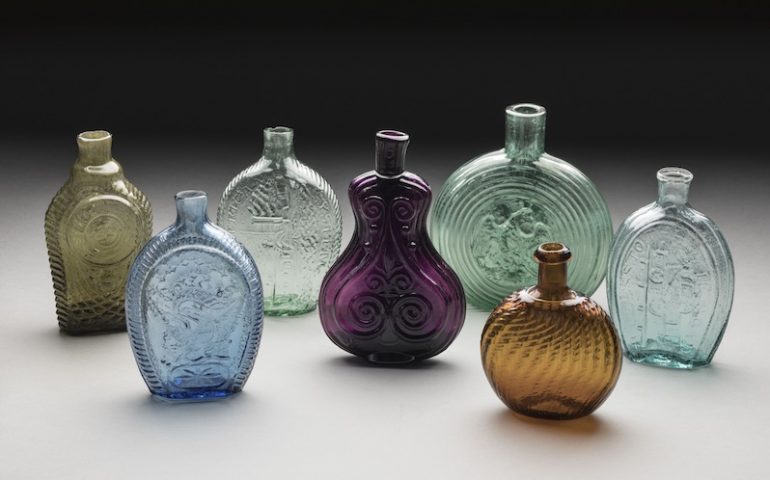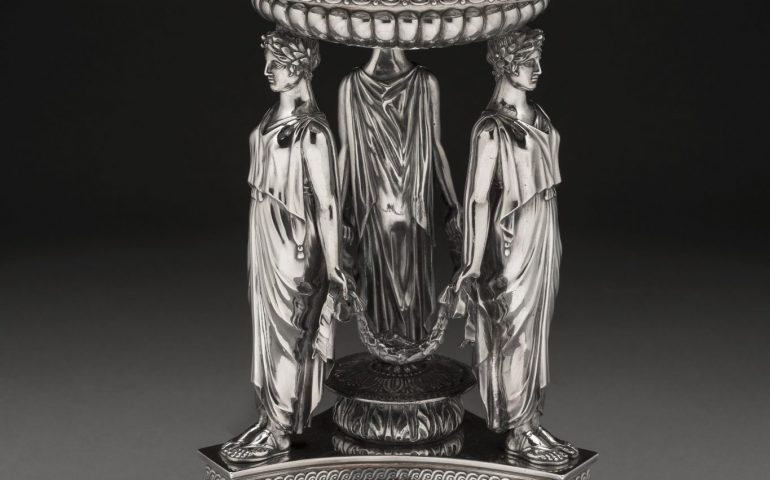NOMA unveils Automaton Clock, Re-opens Beloved Decorative Arts Galleries
NEW ORLEANS, LA – The New Orleans Museum of Art (NOMA)’s automaton musical clock would have been viewed as a mechanical wonder when it was made in London around 1800, and it still charms today as the centerpiece of a new installation. On view through October 8, 2017, Automaton Musical Clock: A Mechanical Marvel marks a time of celebration for NOMA, as the museum reopens its Lupin Foundation Decorative Arts Center.
The recently restored clock returns to NOMA after undergoing careful restoration by one of the best art conservators in London. The luxurious gilt bronze and enamel showpiece is now the center of NOMA’s Elise M. Besthoff Charitable Foundation Gallery, a new gallery space dedicated to changing exhibitions of design and decorative arts.
“NOMA is committed to making the Elise M. Besthoff Charitable Foundation Gallery an interactive learning environment for decorative arts projects,” said Susan M. Taylor, the Montine McDaniel Freeman Director of NOMA. “We are delighted to open this new gallery highlighting a superb work of art with a captivating story. NOMA’s automaton clock suffered significant damage in Hurricane Katrina flood waters at a New Orleans clock repair shop. We identified the work as a key conservation priority, and the support of the Elise M. Besthoff Charitable Foundation made this painstaking restoration possible.”
“Mechanical gadgets like NOMA’s clock were made in Europe, but often intended for Asian markets,” adds Mel Buchanan, NOMA’s RosaMary Curator of Decorative Arts & Design. “In the 1600s and 1700s Europe had an imbalanced trade with Asia. The Chinese did not have a passion for western commodities, whereas Europeans were ravenous for Chinese spices, silks, tea, lacquer and porcelain. Mechanical objects were an exception. Adored by the Qianlong Emperor, items like clocks were used by commercial traders and politicians as gifts to Chinese officials.”
Automaton Musical Clock: A Mechanical Marvel includes an ArtTab digital tablet developed by NOMA to share the clock’s movements and melodies as it strikes the hours, its recent thorough restoration, and how such clocks were used as part of 18th-century British-Chinese diplomacy. About the Decorative Arts Galleries Automaton Musical Clock is the first special exhibition in NOMA’s new Lupin Foundation Decorative Arts Center. In a series of gallery unveilings planned through 2018, NOMA’s beloved permanent collection of design, craft, and ornament returns to public view. The collection’s whimsical porcelain figures, enchanting miniature portraits, and a dazzling array of historical glass have ranked among NOMA’s visitor favorites for decades, and the collection display is now being updated with a new installation that carries forward NOMA’s curatorial initiative to integrate collections across material and culture, to provide layered interpretation, and to present the best of our Gulf region’s artistic expression in context with our encyclopedic collection covering ancient to contemporary arts.
The first of the decorative arts permanent collection galleries to open focuses on 18th- and early 19th-century design and art in America and Europe. “We were purposeful to start with the decorative arts that defined NOMA’s foundational collection,” said Susan M. Taylor, the Montine McDaniel Freeman Director of NOMA, “NOMA’s serious collecting of design objects started with an important glass collection given by Melvin P. Billups in 1955, and then expanded in 1979 with the gift of Louisiana and American decorative arts by the family of New Orleans collector Felix H. Kuntz.” “This first gallery is a model for how we will move forward,” adds Buchanan, “It highlights design connections between glass and furniture, European porcelain and American paintings, and tiny portrait miniatures and monumental silver centerpieces. In the next two years we will show similar connections among objects in high Victorian styles, turn-of-the-century revolution in ornament, 20th-century Modernism, and finally, 21st-century designers working in new craft and technology mediums.”
Exhibition-Related Programming
Noontime Talks: Mel Buchanan, Curator of Decorative Arts and Design, will lead noontime gallery talks that explore the new decorative arts installation, and the automaton musical clock.
About NOMA and the Besthoff Sculpture Garden
The New Orleans Museum of Art, founded in 1910 by Isaac Delgado, houses nearly 40,000 art objects encompassing 5,000 years of world art. Works from the permanent collection, along with continuously changing special exhibitions, are on view in the museum’s 46 galleries Fridays from 10 a.m. to 9 p.m.; Tuesdays, Wednesdays, and Thursdays from 10 a.m. to 6 p.m.; Saturdays from 10 a.m. to 5 p.m. and Sundays from 11 a.m. to 5 p.m. The adjoining Sydney and Walda Besthoff Sculpture Garden features work by over 60 artists, including several of the 20th century’s master sculptors. The Sculpture Garden is open seven days a week: 9 a.m. to 6 p.m. The New Orleans Museum of Art and the Besthoff Sculpture Garden are fully accessible to handicapped visitors and wheelchairs are available from the front desk. For more information about NOMA, call (504) 658-4100 or visit www.noma.org. Wednesdays are free admission days for Louisiana residents, courtesy of The Helis Foundation. (May not include special exhibitions.) Teenagers (ages 13-19) receive free admission every day through the end of the year, courtesy of The Helis Foundation.
Contact Margaux Krane, Communications and Marketing Manager, for additional information and hi-res images: mkrane@noma.org, 504.658.4016.
Gallery of select images from Automaton Clock: A Mechanical Marvel and Decorative Arts Galleries
